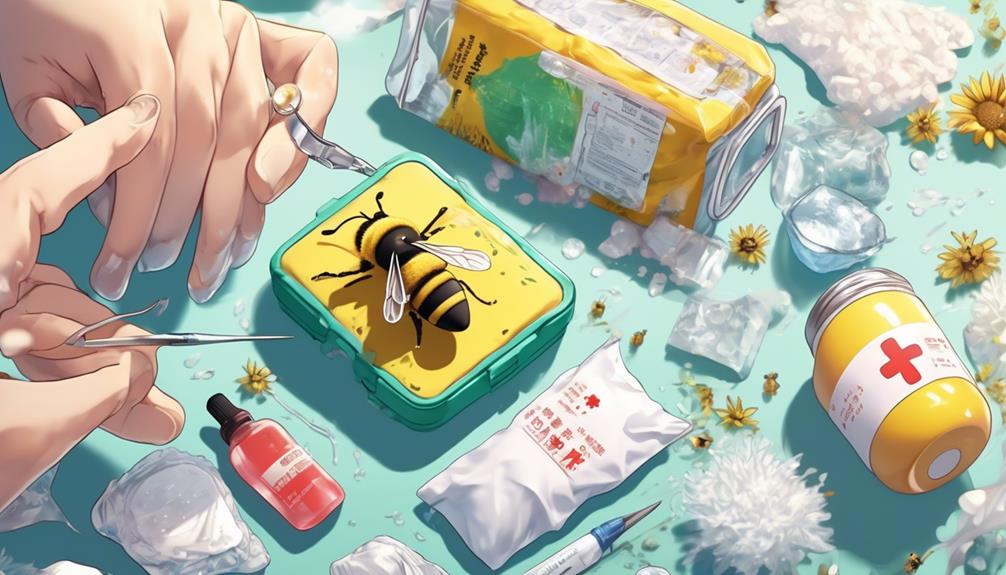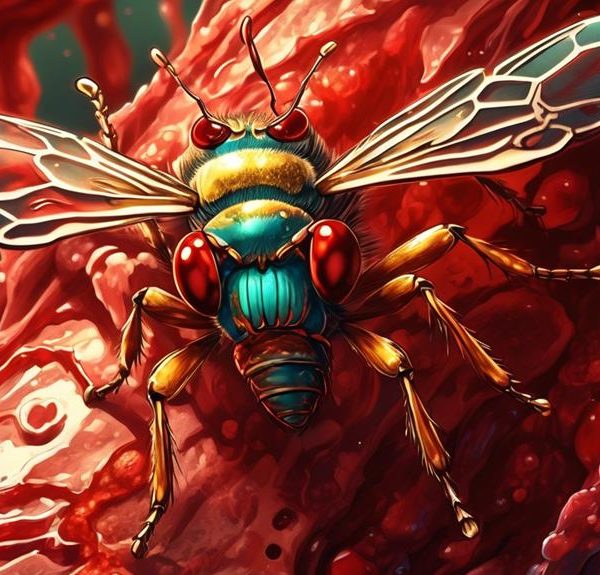Learn how to soothe a sweat bee sting at home, with our effective remedies and know when it's time to seek medical attention.

How to Treat Sweat Bee Sting
When life gives you lemons, you make lemonade; but what do you do when a sweat bee stings you?
You're out enjoying the summer sun, perhaps tending to your garden, when suddenly you feel a sharp sting on your skin. There's no mistaking it – you've been targeted by a sweat bee.
It's not the end of the world, but it can be quite uncomfortable. So, how do you treat a sweat bee sting? Is there a simple home remedy, or should you rush to the emergency room?
We'll explore these questions and more, but before we do, let's understand a bit more about sweat bees and why they sting.
Key Takeaways
- Sweat bees sting to defend themselves when they feel threatened.
- Immediate first aid measures for a sweat bee sting include removing the stinger, rinsing the affected area, applying a cold pack, and using antihistamine cream or oral antihistamine for itching and swelling.
- Natural remedies such as ice packs, honey, baking soda paste, and aloe vera gel can provide relief and soothe discomfort from a sweat bee sting.
- Over-the-counter treatment options for managing pain, reducing swelling and itchiness, and controlling allergic reactions can be used, but it's important to follow dosage instructions and seek medical help if symptoms persist or if there are signs of an allergic reaction or infection.
Understanding Sweat Bee Stings

Before you can effectively treat a sweat bee sting, it's crucial that you understand what exactly happens when you're stung. Sweat bees, contrary to what their name suggests, don't sting you out of love for your sweat. Rather, they're attracted to the salts in your sweat. However, if they feel threatened, they'll resort to stinging as a defense mechanism.
When a sweat bee stings, it injects venom through its stinger into your skin. This venom triggers an immune response from your body, causing the area around the sting to swell and turn red. You'll also feel a sharp, burning pain at the site of the sting, which might be followed by itching.
Now, you might wonder why some people have severe reactions to bee stings while others don't. Well, it's all about how your body reacts to the venom. Most people have a mild reaction, but if you're allergic to bee venom, you could experience severe symptoms like difficulty breathing, hives, or even anaphylactic shock. It's important to seek immediate medical attention if you're experiencing these severe symptoms.
Immediate First Aid Measures

When you're stung by a sweat bee, the first thing you've got to do is stay calm and quickly follow these immediate first aid measures:
- Remove the Stinger: It's essential to get the stinger out as soon as possible to minimize the venom's spread. Carefully scrape it off with a flat-edged object like a credit card. Avoid using tweezers or pinching it, as it could inject more venom.
- Rinse the Area: After removing the stinger, rinse the affected area thoroughly with soap and cool water. This helps cleanse the sting site, reducing the risk of secondary infections.
- Apply Cold Compress: To minimize swelling and pain, apply a cold pack or cloth filled with ice on the sting site for 15-20 minutes.
- Treat the Symptoms: Treat symptoms as they appear.
- Apply Antihistamine Cream: If the area is itchy or swollen, apply over-the-counter antihistamine cream or take an oral antihistamine.
- Pain Relievers: If you're experiencing pain, taking over-the-counter pain relievers could help.
Natural Remedies for Relief

Aside from over-the-counter treatments, there are natural remedies you can use to soothe a sweat bee sting and alleviate discomfort. One such remedy is ice. Applying an ice pack to the area for 10-minute intervals can reduce swelling and numb pain.
Honey's antibacterial properties can also help. A dab of honey on the sting site, covered with a bandage, can promote healing. Baking soda mixed with water into a paste and applied to the sting can also provide relief. It'll help neutralize the venom, reducing itching and pain.
Aloe vera's soothing properties can be beneficial. Cut a leaf, and apply the gel directly to your sting. It'll cool and calm the skin, promoting healing.
Over-the-Counter Treatment Options

For fast relief from sweat bee stings, you'll find several effective over-the-counter options available. These remedies can help reduce pain, swelling, and discomfort, allowing you to recover more comfortably.
Here are some treatments you can consider:
- Pain Relievers: Over-the-counter pain relievers like ibuprofen or acetaminophen can help manage the pain from a bee sting. Be sure to follow the recommended dosage instructions on the packaging. Consult with a healthcare professional if pain persists.
- Topical Creams: There are numerous creams and ointments that can aid in reducing swelling and relieving itchiness. Hydrocortisone creams can help with inflammation and itchiness. Calamine lotion can also soothe the skin and reduce itchiness.
- Antihistamines: If you're experiencing a more severe reaction, over-the-counter antihistamines may be beneficial. They can help control allergic reactions and reduce swelling. Always follow the package instructions and consult with a healthcare professional if symptoms persist.
Remember to clean the sting site thoroughly before applying any treatments. If you develop severe symptoms like difficulty breathing or dizziness, seek immediate medical attention. These could be signs of a more serious allergic reaction.
Recognizing When to Seek Medical Help

While over-the-counter treatments can alleviate most sweat bee sting symptoms, it's crucial to recognize situations that require immediate medical attention. If you experience difficulty breathing, hives, swelling of the face, throat, or mouth, a weak or rapid pulse, or dizziness, you could be having an allergic reaction. This is a medical emergency and you should seek help immediately.
Even if you're not allergic, some symptoms may necessitate a doctor's visit. If the sting site becomes increasingly red, swollen, or painful, or if there's discharge, these are signs of infection. Similarly, if you've been stung multiple times or if the bee's stinger remains lodged in your skin, you should get medical help.
Conclusion
So, now you're well-versed in dealing with sweat bee stings. You know how to provide immediate first aid, use natural remedies, and apply over-the-counter treatments.
You've also learned when it's time to seek medical help. Don't let a little sting ruin your day. Remember, it's important to act promptly and stay calm.
With this guide, you're ready to take on any sweat bee sting that comes your way.



